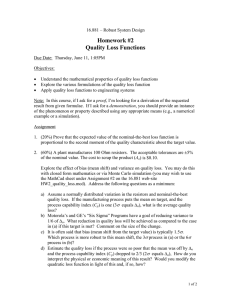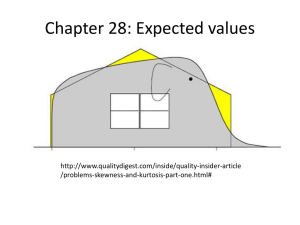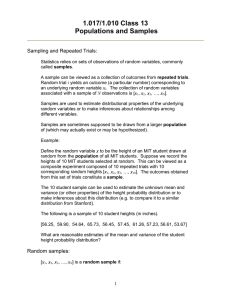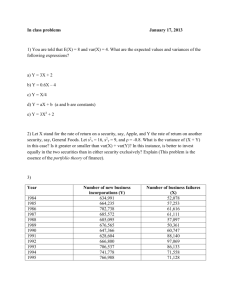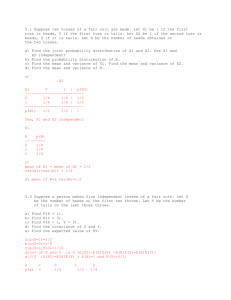Note that E(X) is the expected value X and ^ indicate and
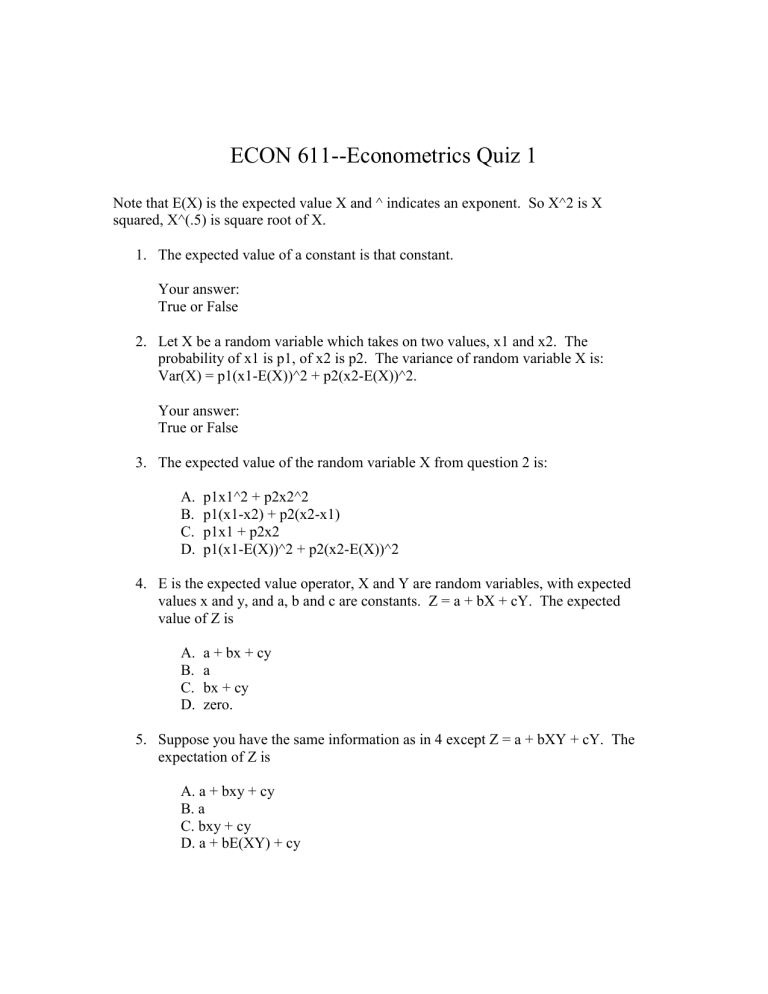
ECON 611--Econometrics Quiz 1
Note that E(X) is the expected value X and ^ indicates an exponent. So X^2 is X squared, X^(.5) is square root of X.
1.
The expected value of a constant is that constant.
Your answer:
True or False
2.
Let X be a random variable which takes on two values, x1 and x2. The probability of x1 is p1, of x2 is p2. The variance of random variable X is:
Var(X) = p1(x1-E(X))^2 + p2(x2-E(X))^2.
Your answer:
True or False
3.
The expected value of the random variable X from question 2 is:
A.
p1x1^2 + p2x2^2
B.
p1(x1-x2) + p2(x2-x1)
C.
p1x1 + p2x2
D.
p1(x1-E(X))^2 + p2(x2-E(X))^2
4.
E is the expected value operator, X and Y are random variables, with expected values x and y, and a, b and c are constants. Z = a + bX + cY. The expected value of Z is
A.
a + bx + cy
B.
a
C.
bx + cy
D.
zero.
5. Suppose you have the same information as in 4 except Z = a + bXY + cY. The expectation of Z is
A. a + bxy + cy
B. a
C. bxy + cy
D. a + bE(XY) + cy
6. If X is a random variable and Z=[X-E(X)]/σ(X), then
A. Z is called a "standardized random variable"
B. E(Z)=0
C. The variance of Z equals 1
D. A, B, and C
E. Only A and B
7. A measure of the closeness with which two variables move together is the
A.
covariance.
B.
standard deviation.
C.
conditional density.
D.
marginal density.
8. If two random variables are independent, then their covariance is 1.
Your answer:
True or False
9. If a random variable X has a normal distribution,
A. the mean of X is equal to the median of X.
B. X has a mean of 0 and a variance of 1.
C. the variable X/Z (where Z has a chi-squared distribution) has a t distribution.
10. If X and Y are two random variables, then the variance of Z=X+Y
A. equals [Var(X) + Var(Y)]^2.
B. equals the sum of the variance of X plus the variance of Y.
C. equals Var(X) + Var(Y) + 2*Cov(X,Y).


